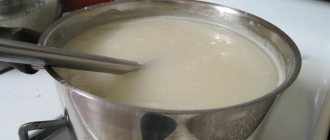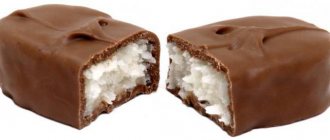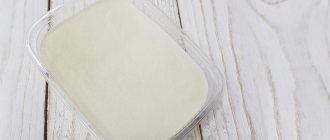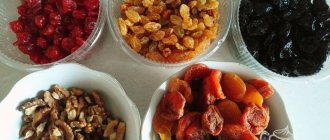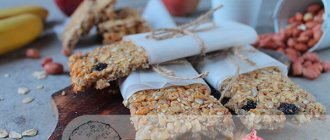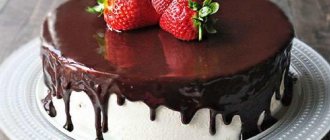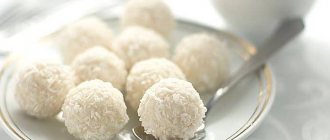Contraindications and harm
Marmalade containing natural ingredients is not harmful.
It is contraindicated:
- in large quantities,
- people who are overweight;
- those who are diagnosed with diabetes mellitus;
- those who have an acute phase of pancreatitis, gastritis, ulcers.
But a product that contains artificial flavors, thickeners, dyes, pectin and other ingredients of chemical origin is harmful to the body and has a number of contraindications.
It should not be eaten:
- people who have problems with the gastrointestinal tract, liver;
- children under 3 years old;
- pregnant women;
- women who are in the period of lactation.
As a result of eating this sweetness, a person may experience:
- allergic reactions;
- gastrointestinal disorders;
- caries and other dental diseases;
- swelling.
Some chemical additives, for example, E 102, E122, can cause hyperactivity in children.
To prevent marmalade from causing harm to health, it can be consumed occasionally and no more than 50 g per day. More than 4 g of agar-agar per day provokes the development of diarrhea and disruption of the bacterial balance in the intestines. It is recommended not to exceed the norm for eating carnauba wax - 7 g per day.
Important! Signs of high-quality marmalade are: transparency, dull color, neutral smell, not cloying, slightly sour taste, good shape retention, clear separation of layers, no crunch when breaking, absence of starch, dyes, flavors, and chemical additives.
So, natural marmalade containing pectin and fruit juice has a beneficial effect on the body, cleansing it, increasing the protective functions of the immune system, improving digestion - but a product that contains artificial ingredients can be harmful to it. When choosing a treat, you should make it a rule: the shorter the list of ingredients, the safer it is. It is also desirable that the substances in the composition are mostly natural.
A short recipe for homemade marmalade from agar-agar, or how to make marmalade at home
- Defrost the berries if necessary.
- Fill the agar-agar with cold purified water and leave for 1 hour.
- Place the berries in a saucepan, add a little purified water, and puree them with a blender.
- Add agar-agar to the berry puree and mix thoroughly.
- Heat the mixture to bubbles, up to 95 degrees and remove from heat.
- While it is heating, add any sweetener a little at a time, tasting each time, until it reaches the desired sweetness.
- Stir and leave to cool slightly for 5 minutes.
- Pour into candy molds and place in the refrigerator for 20 minutes until completely set.
- Take it out of the refrigerator, carefully take it out of the molds and delight your loved one.
- Hooray, you know how to make marmalade at home!
Homemade marmalade with agar-agar is ready for use. It is very tasty, very healthy and dietary. In fact, it’s Friday, it’s already one o’clock in the morning, and I just recently re-prepared the candies, took photos, and now I’m finishing the recipe. I really tried to make it before Saturday, and it worked! Now each of you will be able to enjoy this sweetness yourself, and also give your loved ones a gift, they will definitely be delighted! Mine, at least, is already very happy
There will be many more holidays coming soon, many more reasons to cook something themed, so stay with me! To make sure you don't miss anything, subscribe to the newsletter for new articles, it's free! In addition, when you subscribe, you will receive as a gift a whole collection of complete recipes of 20 dishes that can be prepared very quickly, from 5 to 30 minutes, which will save a lot of your time! Eating quickly and tasty is real!
And Vika Leping was with you! Try to bring to life the recipe for marmalade with agar-agar, like, leave comments, rate it, tell us what you did and remember that everyone can cook deliciously, that you are more talented than you can imagine and, of course, enjoy your food! I love you, be happy!
rightfood.net
A simple recipe for strawberry jam for the winter
Also check out these articles
- How to get rid of aphids using folk remedies
- Winter-hardy varieties of peaches
- Varieties of climbing roses
- Planting spring garlic
Making delicious, homemade strawberry jam is not difficult if you follow the instructions. Below is a simple recipe for making strawberry jam at home.
A simple recipe for strawberry jam for the winter
Ingredients:
- Strawberries – 1 kg;
- Granulated sugar – 800 g;
- Lemon juice – 40 ml.
Preparation:
- Strawberries need to be washed thoroughly and sorted. All spoiled, with bugs or dry, are removed from the common bowl. They are not suitable for making jam.
- Now the berries need to be poured into a common container and pureed using a blender. If you don’t have one, you can use a meat grinder, a puree masher, or even a regular fork.
- To ensure that the jam is homogeneous, it is filtered through a sieve. This is an optional procedure. On the contrary, many people like it when they come across small pieces of strawberries in jam.
- Place the strawberry puree on the stove, add sugar and cook after boiling for 5 minutes.
Important!
If the surface of the jam has become smooth, shiny, and almost no bubbles rise, this means that it is ready and you can turn off the heat.
- After the specified time, lemon juice is added to the jam. Continue cooking the jam for another 20 minutes over medium or low heat.
- The finished dish is poured into sterile jars and rolled up. In order for the jam to be stored for a long time, it must be placed under a towel overnight (the jars are turned upside down) and only after a day can the preservation be transferred to the pantry.
This recipe can be considered classic. The dish is prepared simply, quickly, with a minimum of ingredients. Even lemon juice can be replaced with citric acid if desired. If you have no experience in making jam, you should try this recipe first, and then experiment with adding other ingredients.
The benefits and harms of marmalade on agar
Agar is an extract from red and brown algae, it is rich in vitamins, minerals and pectin. Thanks to this, sweets on agar are beneficial for the body, remove toxins and improve intestinal function.
Sweets can be harmful if they contain artificial colors or flavors.
Of course, for people who can't eat sugar, it's best to make candy with safe sweeteners or no sweeteners at all.
If you take these small nuances into account, homemade marmalade will only provide benefits and no harm.
www.wday.ru
Beneficial features
Children's marmalade, prepared according to a classic recipe from natural fruits or berries, contains vitamins of groups A, B, C, E, D, K, micro- and macroelements - sodium, calcium, potassium, iron, magnesium, copper, phosphorus and many other useful components.
Benefits of treats for children of different ages:
- Normalizes hemoglobin and cholesterol levels in the blood.
- Helps cope with high sugar levels.
- Improves metabolism.
- Stimulates the functioning of the gastrointestinal tract, normalizes stool.
- Reduces appetite, accelerates the digestion of food and the breakdown of fat cells, making it a dietary product.
- Has a positive effect on the skin.
- Strengthens the musculoskeletal system, prevents fragility and brittleness of bones.
- It has a soft, enveloping effect on the gastric mucosa, protecting it from irritation.
- Improves memory and brain activity, normalizes sleep.
- Restores strength, increases activity and energy, acting as a natural stimulant.
What are the benefits of candy? — Dr. Komarovsky
Chewing dessert is no less useful. It strengthens the gums and prevents their bleeding, and the beeswax in its composition effectively fights various bacteria and disinfects.
Homemade marmalade with agar agar
- Mix agar agar with cherry, orange juice or water at room temperature until smooth. Leave for 10-20 minutes. A small digression about orange juice. Many recipes recommend diluting agar agar with orange juice, as it neutralizes the characteristic “marine” taste of agar agar. I partly agree with this, but note that this “works” well for fruits and berries without a pronounced taste and aroma (for example, apples, cherries or gooseberries). Cherries, currants, raspberries work great without orange. Orange juice and zest will certainly decorate our marmalade, but will also increase our production costs :). The most important thing is to maintain the correct amount of agar in the recipe.
- Mix cherry juice with sugar, put on fire and bring to a boil, add vanillin and agar agar diluted in juice or water.
- Bring everything back to a boil and simmer over low heat for 1-2 minutes (no more!). We get in the way all the time!
- Turn off the heat, let the mixture cool slightly and pour into a silicone mold, glass bowl or small molds, as you like. I like best to pour the marmalade into a silicone baking dish. The layer thickness is 1.5-2 cm. There is no need to lubricate the mold with anything. Leave until completely hardened. This won't take long, but it's important that the marmalade cools completely, otherwise it might break when trying to remove it from the mold. Once cooled, it comes out perfectly and does not break.
- Homemade marmalade is ready! It is good and tasty on its own. But there is no limit to perfection, in some batches (and I have made it many times :)), I added heat-resistant chocolate drops directly to the hot mixture, before pouring it into the mold. It turned out well, the kids really liked it.
- I also had confectionery topping in the form of very small dragees - it also turned out very tasty and beautiful. You can dip the marmalade in sugar and leave to dry a little at room temperature. You don't have to sprinkle anything at all. I cut the marmalade into wavy slices using a cheese knife. Most of our marmalade was eaten in this form
- Homemade marmalade is prepared quickly and very simply. For me, having cherry juice after preparing dried cherries, everything became ridiculously simple. I take a jar of ready-made juice with sugar, dilute it with a small amount for 1 hour. l agar agar, bring the rest to a boil, add vanillin and agar agar. I pour it into molds - that's it - 1 kg of delicious homemade natural marmalade is ready. Do you think 1 kg of marmalade is a lot, my sweet tooth doesn’t think so
- Try it, I’ll be glad if my successful and unsuccessful experiences are useful to someone. By the way, the taste of this marmalade differs from the usual “store-bought” one; it does not have “stringiness”, but rather resembles candied “orange slices”. They say that if you add more sugar and leave the marmalade to dry for a week, it will stretch. I don’t know, our marmalade is eaten quickly and simply doesn’t last long enough to become “sticky”.
Have fun preparing delicious natural summer sweets and come visit. Next time I will treat you to a very delicate fruit manna. Do not miss!
Recipe for marmalade with pectin
Homemade marmalade based on pectin is prepared quickly. This will take no more than 40 minutes.
To prepare you will need:
| Ingredients: | Quantity: |
| sugar; | 0.6 kg; |
| pectin; | 1 sachet |
| berry puree; | 0.5 kg; |
| lemon acid; | 1 sachet; |
| water; | 1 teaspoon; |
| honey or glucose. | 170 g |
Preparation:
- Place a tablespoon in the freezer to test the finished mass at the end of cooking. Pour the berry puree into a thick-walled pan and begin to heat over medium heat.
- Sugar is added to pectin. Citric acid is diluted in water.
- If small bubbles appear in the puree, add a mixture of pectin and sugar. The sweetened puree is constantly stirred.
- When the mixture begins to boil, you need to add honey or glucose syrup.
- The mass is boiled to 107 °C, stirring constantly. Approximately in time it turns out to be 15 minutes.1
- Add citric acid to the future marmalade and mix it thoroughly.
- To determine the readiness of the marmalade, you need to drop the sweet mass onto a spoon placed in the freezer. If after half a minute it becomes thick, the marmalade is ready.
If the marmalade does not thicken, there may be several reasons:
- Store-bought pectin is of poor quality.
- Marmalade contains little citric acid.
- The required temperature could not be reached.
In this case, the mixture is boiled further and more citric acid is added. It is advisable to place the marmalade in a silicone mold. You need to wait until it cools down completely, and then the sweetness is served. If desired, sprinkle the marmalade with powdered sugar or simply roll it in sugar.
Pectin-based marmalade is tasty and aromatic.
Ingredients:
- 270 g tangerines;
- 250 g lemon;
- 250 g orange;
- 12 g pectin;
- 300 g granulated sugar;
- 2.5 g citric acid;
- 60 g glucose syrup;
- a tablespoon of water.
Preparation:
- A puree is prepared from citrus fruits. To do this, they are cleaned and divided into slices. The film is removed.
- Pectin is mixed with a small amount of granulated sugar, and glucose syrup with the rest of the sugar. Citric acid is mixed with water in a separate container.
- Now you need to start heating the puree. When the temperature reaches 40 degrees, add pectin and increase the heat slightly.
- When the mixture begins to boil, add the remaining sugar with glucose syrup.
- To prevent burning, stir everything. When the temperature reaches 110 degrees, remove the pan from the heat and add a solution of citric acid. Mix everything thoroughly.
- The marmalade is poured into molds and refrigerated for 3 hours. The finished sweet is rolled in sugar.
Calorie content
Marmalade is a jelly-like confectionery product made from fruit or berry puree boiled in sugar.
Depending on what ingredients are included in the sweet, its calorie content will also be different. It is lowest for a product prepared from natural ingredients with the addition of plant-based thickeners.
| Type of marmalade | Calorie content - kcal per 100 g |
| Natural, on agar-agar | 220–270 |
| Chewing | 340 |
| Made with natural pectin | 293 |
| With pieces of fruit | 335–342 |
| With candied fruits | 350 |
| With cream filling | 325–358 |
| With nuts | 398 |
class="table-bordered">
Marmalade made with your own hands at home will have the lowest calorie content.
For example, 100 g (half a glass) of a product, which includes 3 apples, 1 tablespoon of gelatin or pectin, and a little cinnamon, will contain 60 kcal. From 300 g of pineapple and 20 g of gelatin you will get marmalade with a calorie content of 65 kcal.
Did you know? The word “marmalade” is derived from the ancient Greek words “memelemenos” - diligently, carefully, and “melops” - having the color of an apple.
The first marmalade was prepared in the Middle East and Eastern Mediterranean to preserve large harvests of apples, quinces and other fruits that contain pectin and can harden to a dense mass when cooked.
When can you give marmalade to a child?
When deciding at what age you can start treating your child to dessert, parents should remember that this industrially produced product contains a huge amount of sugar, dyes, preservatives and other synthetic substances. Therefore, such a treat should not be given to a baby under 12 months.
When and how can you give your child marmalade:
- Treats, even natural ones, should not be included in the first complementary foods. Feed your baby sweet treats after 1 year of age.
- Chewable sweets are allowed only when the child is over 18-24 months old.
- Complementary foods with dessert should be given to the child after meals, in small dosages and not every day. 1-2 times a week is enough.
When introducing sweets into complementary foods, parents need to carefully monitor the child’s well-being and behavior for 2-3 days. If he feels well and there are no symptoms of food allergies, the amount of sweet product can be increased slightly.
Possible harm and contraindications
Marmalade should not be included in the children's menu if the child has diabetes or diseases of the digestive system. Also, the possibility of an allergic reaction or intolerance to the natural product cannot be ruled out.
They are manifested by skin rashes and redness, stool upset, and increased body temperature. In such cases, the treat must be completely excluded from the child’s diet.
Features of choosing a natural treat
To ensure that a sweet dessert does not harm the child’s health, it must be chosen correctly. What to look for when buying baby marmalade:
- the dessert should not have a too bright and saturated color - this indicates the use of cheap dyes;
- the natural product has a dull color with a honey tint, most often it comes in the form of plates;
- a high-quality delicacy should have a neat, clear shape without any dents or deformations;
- carefully study the composition of the product indicated by the manufacturer - it should not contain preservatives, flavors, dyes, emulsifiers and other chemical additives;
- This dessert is elastic; when pressed, it quickly returns to its original shape.
The most useful and natural is the plastic product (recipe below). It is prepared according to a classic recipe from a minimum amount of ingredients. The composition of the plastic delicacy includes only fruit or berry mass, which is boiled with the addition of sugar. Sometimes pectin can be used as an additional thickener. This dessert does not look as beautiful as other types of delicacy, but its benefits are undeniable.
The healthiest and safest for a child from 12 months is a homemade dessert that you can easily prepare yourself.
How to make homemade marmalade with agar agar
You can use any fruit or berry juice, even packaged ones from the store. Although freshly squeezed dessert will be tastier and healthier.
Recipe for cherry marmalade from agar agar:
- Dissolve agar powder in orange juice. Let stand for 15 minutes.
- Mix cherry juice with sugar and bring to a boil.
- Add vanillin and juice with agar.
- Simmer over low heat for no more than 2 minutes, stirring constantly.
- When the liquid has cooled slightly, pour it into molds. You can use one large one, pour the liquid 2 cm high, and then cut the finished dessert into pieces. Or pour directly into silicone molds.
- Let the candies cool completely in the mold; if you take them out too early, they will break.
There is no need to put it away in the cold; it will harden at room temperature. You can sprinkle the finished sweets with sugar, colored sprinkles, or leave them as is.
Also try making bright and tasty marmalades from fresh strawberries. What products will you need:
- Fresh strawberries – 700 g.
- Agar – 20 g.
- Boiled water – 1 cup.
- Sugar or sweetener - to taste.
Before preparing marmalade with agar agar, you need to soak it in a glass of water for at least 20 minutes. During this time, grind the washed strawberries without leaves in a blender into a homogeneous puree.
Add water with agar, stir and place on low heat. Bring the mixture to a boil, simmer for a couple of minutes after bubbles appear.
While cooking, add sugar, fructose or other sweetener, stirring and tasting until there is enough to your liking.
Let the mixture cool for 5 minutes. and pour into molds. You can leave it on the table or put it in the refrigerator, where it will harden in 20 minutes. Carefully remove from the molds and taste.
Gelatin marmalade
Gelatin marmalade with cherries turns out very tasty.
Ingredients:
- gelatin packet;
- lemon juice – 80 g;
- 50 g cherry juice;
- 400 ml of drinking water;
- 0.4 kg granulated sugar;
- 15 g grated lemon zest.
How to cook:
- Add gelatin to cherry juice.
- The mixture is left to brew for 1.5 hours. While the gelatin is swelling, combine water and sugar.
- The mixture is simmered over low heat until the sugar dissolves.
- After the sugar has dissolved, ready-made gelatin is added and boiled until completely dissolved.
- The pan with marmalade must be removed from the pan and the product must be filtered to extract the zest.
- Grease the mold with vegetable oil and pour the mixture into it.
Step-by-step recipe for making marmalade at home.
The marmalade should be placed in a cool place for 5 hours until it hardens. Gelatin marmalade with the addition of blueberries is a tasty and at the same time healthy sweet.
Ingredients:
- 30 g gelatin;
- 300 g blueberries;
- 120 g granulated sugar.
Preparation:
- Add a little water to the berries and boil for up to 10 minutes.
- While they are boiling, the gelatin is soaked in water.
- Hot berries are crushed with a blender. The mixture should be rubbed through a sieve to avoid any skins or seeds.
- The juice is poured into the ladle and granulated sugar is added. Then gelatin is added.
- The mass is heated a little, but not boiled. Pour into molds and allow to harden for up to 2 hours in a cold place.
Advice from experienced pp specialists
To ensure that marmalade at home with agar-agar always turns out as in the photo from magazines or websites, no matter what recipe you choose, follow the advice of experienced chefs:
- Read the instructions on the agar packet carefully. The proportions of water and substance will differ from manufacturer to manufacturer.
- Dissolving the gelling agent in water, bring the mixture to a boil. If there is juice instead of water, you can simply warm it up to 60-70 degrees.
- You need to add a little more agar to acidic juices than to water.
- Agar-agar is sold in the form of powder, plates, and flakes. High quality, highly purified and has no odor. Agar, which is slightly cheaper, may smell like algae.
- When preparing marmalade, cooks recommend diluting the gelling powder in orange juice in order to remove the smell of iodine and algae. Juices of aromatic berries: strawberries, cherries, raspberries cope with this problem on their own. If you are making marmalade from apples or pears, it is better to use orange juice.
- It is better to store the finished marmalade in the refrigerator, in a container with a lid. There are no preservatives in homemade dessert, which means the product is perishable.
Marmalade without thickener
Marmalade at home without the use of a thickener is prepared from fruits and berries.
Ingredients:
- 2500 g plums;
- 2500 g sugar.
Preparation:
- The plums are washed, cut in half and the bones are removed. Using a meat grinder, fruits are turned into puree. Add sugar and mix well. There is no need to add water, since rolled plums are juicy and sugar will dissolve in them without any problems.
- Bring everything to a boil and simmer over low heat. For the first 30 minutes you need to stir the plums every 5 minutes, then continuously for an hour. The water will evaporate, the plums will thicken, and if this is not done, they will splash. Stir until a dry path appears at the bottom. As a rule, this takes up to 2 hours.
- The mold is covered with parchment paper and hot marmalade is poured onto it. The thickness of the marmalade is up to 10 mm.
The finished marmalade does not have a cloying, but a sweet and sour taste. And most importantly, it is completely natural, which means it is healthy. The second version of marmalade without a thickener is apple marmalade.
Ingredients:
- 1000 g sugar;
- 2 kg of sour apples.
Preparation:
- Clean apples are peeled and cored. Place in the oven, preheated, and bake until done (about 30 minutes).
- Using a blender, puree the baked apples and transfer them to a wide container. Add sugar and mix everything.
- The mixture is put on fire and begins to evaporate for about 1.5 hours over low heat. Stir the puree constantly with a wooden spoon so that it does not stick to the bottom of the pan.
- When the puree begins to thicken, check it for readiness. To do this, you need to drop a couple of drops onto a spoon and see if the mixture becomes elastic. The marmalade is ready when the mixture begins to harden.
The finished marmalade should be stored in a hermetically sealed container in the refrigerator or just a cool place. Homemade marmalade made from pears is tasty and aromatic.
Ingredients:
- 1000 g pears;
- 500 g sugar.
Preparation:
- The pears are washed, peeled and pitted.
- Now they need to be boiled over low heat for an hour and a half. The mixture is constantly stirred to avoid sticking to the pan.
- Boiled pears are mashed and granulated sugar is added. Then the puree is boiled for about another 30 minutes until the sugar is completely dissolved.
The finished marmalade is poured into molds and cooled. There is also an option for making marmalade from plums and apples.
Ingredients:
- 0.5 kg plums;
- 0.5 kg apples;
- 0.4 kg granulated sugar.
Preparation:
- Fruits need to be washed and cut. The bones are removed from the plums, and the skins are peeled from the apples.
- Place everything in a bowl, add granulated sugar and cook over low heat for 30 minutes. The consistency should be uniform.
- If the marmalade turns out sour, add sugar and continue the cooking process.
When the marmalade thickens, place it in a plastic mold covered with a bag. After 24 hours, the marmalade is removed from the mold, cut into portions and served. Roll in sugar if desired.
Frozen berry marmalade
In the production of this sweet it is important to guess the amount of sugar. Some juices or fruits are quite sour
You should not skimp on sugar in these types of sweets. Let's look at how to make redcurrant marmalade with agar-agar, given that the berries were previously frozen.
- Pour two and a half teaspoons of vegetable thickener into 70 milliliters of orange juice.
- Pour boiling water over the frozen berries (450-500 grams), put them in a saucepan or deep iron bowl and add 250 g of sugar.
- When the red currants release their juice, put them on the fire. Let it boil.
- Puree the mass with a blender.
- We measure 400 milliliters. Add orange juice with agar-agar.
- Put it back on the fire. We prepare it the same way as coffee is brewed - without letting it boil and stirring all the time. If bubbles begin to appear too rapidly, raise the pan and lower the temperature.
Black and red currant marmalade
Marmalade with agar-agar can be made at home from garden berries, which will make it even tastier and more pleasant to the taste. The qualitative characteristics of currants with a natural thickener make it possible to obtain a dessert with a pronounced aroma and the absence of extra calories.
Products for sweets:
- red currant – 250 g;
- black currant – 250 g;
- sugar – 500 g;
- agar-agar – 10 g;
- cinnamon – 4 g;
- cloves – 4 g;
- liqueur – 2 tsp;
- water – 50-70 g.
We invite you to familiarize yourself with Self-training in the gym for men
Preparation:
- The fruits need to be sorted and washed. Place in a blender bowl and blend until smooth.
- In a separate container, combine agar-agar with water. Mix thoroughly and leave for 20-30 minutes.
- Add sugar, cloves, cinnamon to the berries and pour in agar-agar and water. Stir until smooth. Let the sugar dissolve.
- Pour in the liqueur and mix everything again.
- Distribute the mixture among the molds and let it harden.
- Remove the prepared marmalade and decorate with sugar.
How to make a healthy dessert
Have you never made such a delicious dish before and have no idea how to make marmalade with agar-agar at home? Believe me, it's nothing complicated!
To ensure that homemade marmalade contains only healthy products, we take juices or purees from fresh or frozen berries, fruits, natural ingredients and a gelling agent.
In these recipes it will be agar-agar, which is industrially extracted from algae (brown and red).
There will be no dyes or flavors in our pp marmalade.
We won't add sugar to it.
We will try to preserve the vitamins, aroma, and taste of all products as much as possible.
Why will we make marmalade on agar: what are its benefits and is there any harm? Why not gelatin? Yes, because agar, although it costs more than gelatin or pectin, is much more convenient to work with:
- hardens faster, even just on the table;
- gives a denser consistency to gummies;
- no calories at all.
Agar enhances intestinal motility, gently cleanses it, helps the liver function and enriches the diet with iodine. But you shouldn’t overeat this delicious, tempting dessert either. Everything is good in moderation!
By the way, there is a recipe for curd desserts with agar.
Universal recipe for fruit and berry pp marmalade
You can make marmalade using the juice of only one type of berry or fruit. Or you can prepare assorted fruits and berries.
The juice can be filtered, the dessert will be clear. But is it worth giving up healthy pulp?
Calorie content 100 g - 53 kcal, bju - 1.1 g protein, 0 g fat, 12.1 g carbohydrates.
Ingredients
- agar-agar - 1-1.5 tsp.
- fruit or berry juice/puree - 150 ml
- orange juice - 50-70 ml
- stevia (natural sugar substitute) or honey - to taste.
Preparation
- Place fruit juice or puree over low heat, add stevia and honey to taste and boil, stirring continuously (if necessary, remove the foam that forms).
- Pour orange juice over the agar and stir. Heat the mixture to 60-70 degrees, stirring until the lumps disappear completely.
- Combine agar with fruit juice and mix thoroughly.
- Pour into molds. Place in the refrigerator or just on the counter until completely frozen. Take the figures out of the molds - they are ready! If desired, roll in coconut flakes.
- You can make “striped” marmalade using juice of different colors. Pour the prepared mixture in layers one at a time (wait for the previous layer to harden before adding a new one).
Kiwi and Banana Recipe
This is banana puree marmalade with kiwi.
Exotic, dietary and not only without sugar, but without any sugar at all!
Calorie content 100 g - 56 kcal, bju - 0.9 g protein, 0 g fat, 13.2 g carbohydrates.
Ingredients
- agar - 10 g
- bananas - 2 pcs. (ripe, sweet)
- kiwi - 2 pcs.
- water - 100 ml.
Preparation
- Add agar-agar to water and stir.
- In a blender, puree the peeled fruits until smooth.
- Bring the agar to a boil and mix with the fruit mixture. Let's boil again.
- Distribute the mixture into a glass form. Place in the refrigerator until it hardens.
- Cut the marmalade into cubes.
- Bon appetit!
Marmalade "Coffee with cream"
This recipe is for those who like to tinker for the sake of aesthetics.
And of course, it will be appreciated by coffee lovers.
By the way, it is precisely because of the coffee that such marmalade cannot be called ideally made, but we will take a high-quality one - brewed in an espresso machine or a Turk.
Calorie content 100 g - 26 kcal, bju - 1.3 g protein, 0 g fat, 4.3 g carbohydrates.
What we need:
- 200 ml brewed coffee
- stevia - 0.5 tsp.
- skim milk - 200 ml
- vanillin - on the tip of a knife
- agar - 1.5 tsp.
How to do:
- Dissolve half stevia and half agar-agar in hot coffee. We do the same with milk, adding vanillin.
- Now the most difficult thing, if we want to get marmalade like in the photo, is not to let the liquids harden ahead of time. Agar becomes a gel at a temperature of 35-40 degrees (more precisely, 38 degrees Celsius), so we figure out how to constantly maintain the temperature a little higher. You can cool it a little and pour it into thermoses, or you can simply leave it in containers with hot water.
- Now, one by one, pour the layers into any wide glass container and wait for each one to harden, add the next one and wait again.
- Or you can simply mix everything or make a two-layer marmalade by first preparing the coffee, waiting for it to harden and preparing the milk part.

